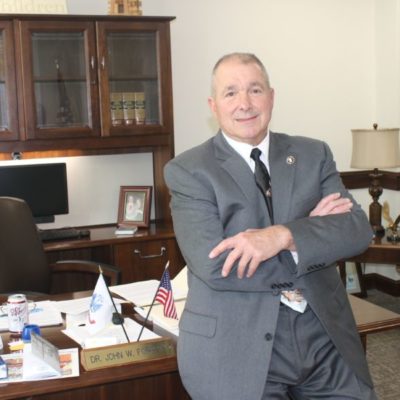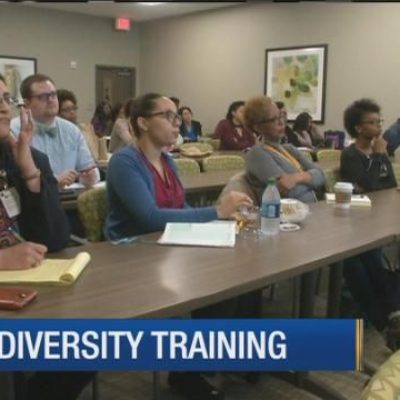How we are working to support students and teachers in our lowest performing schools
My guiding philosophy is that all means all. All students, regardless of race, gender or socioeconomic status, deserve a chance to receive a quality education from our state’s public schools. We must create a pathway for success for each and every child. Simply doing nothing while students languish in schools that have underperformed for generations is counter to our principles as Tennesseans. With that in mind, let’s take a step back for a moment to talk about school improvement in our lowest performing schools and what we have planned in Tennessee.
A couple of years ago, we worked with 6,000 stakeholders, educators and community leaders across Tennessee to formulate Tennessee’s strategy for creating pathways to success for every student in our great state. Building off our Tennessee Succeedsstrategic plan and working within the guidelines of the federal Every Student Succeeds Act, or ESSA, which requires states to identify and take action to improve schools designated as being in the bottom 5 percent, we created a new school improvement framework for Tennessee based on stakeholder input, robust research, and strategic analysis and lessons learned from experience over several years. This new school improvement framework includes the following key principles for improving underperforming schools:
- Local school districts will always have the first opportunity to improve a school when it is designated as being in the bottom 5 percent. The Tennessee Department of Education does not want to take over schools unless absolutely necessary. We want local districts to take the steps necessary to improve low performing schools within the district. To that end, the state has been making additional financial and other resources available to support the district’s local efforts at school improvement. We have also been able to partner with the General Assembly to add $20 million of state funding to school improvement efforts in our Priority schools.
- We must invest in what works.Evidence-based strategies that support strong leadership, effective instruction, and a supportive learning environment that meets the needs of the whole child will be the focus of school improvement planning. Supporting this effort, the state has partnered with the Tennessee Education Research Alliance at Vanderbilt University to gain helpful insights and strengthen our work.
- Students cannot wait. We must have a sense of urgency about school improvement. There are schools in our state that have been underperforming for generations. Often, these schools are just a few miles from places where students are graduating with every opportunity at their fingertips. We cannot tolerate this disparity – something must change.
Since 2011, we have identified schools in the bottom 5 percent of the state about every three years as part of what we call the Priority list. When a school first appears on the Priority List, the local school district, with support from the state, is expected to take meaningful action to improve that school, including establishing an evidence-based plan for improvement and applying for and utilizing additional federal and state resources dedicated to Priority schools. The goal is for the local school district to implement and execute improvement measures that move the school out of the bottom 5 percent and off the Priority List.
If the school remains on the Priority List over multiple years, the state, by necessity, becomes more engaged. What that looks like depends on the local context for the school. For example, the state may decide to continue with the current intervention underway if signs of improvement are evident, or the district may opt to close the school or to convert it to a public charter school. The state and district may also work together on a partnership model, such as the one we have in Hamilton County, where the state and district share joint responsibility for a handful of Priority schools within the same feeder pattern that have been identified for improvement for the last 17 years.
Eventually, if the school remains on the Priority List for multiple years despite these improvement efforts, it can become eligible to move into the Achievement School District, which is the state-run district that works with schools that have been in the bottom 5 percent for years, if not decades.
There is a tired narrative that the Achievement School District has not been successful. In fact, since the creation of the ASD, the overall performance of schools on the Priority List has improved, in some cases dramatically, and we have raised the floor for the bottom 5 percent – it is now a higher bar. There are a number of schools that have gone from the Priority list to now meeting the criteria for a Reward school (our highest distinction), including three schools in the ASD. Generally, as schools have stayed in the ASD, students have grown at least as fast if not faster than their peers in other schools. Suspension rates for schools in the ASD have decreased over time, a sign of improved school culture. While I agree the Achievement School District has not yet met the ambitious goals it set forth six years ago, the ASD has single-handedly changed the conversation on school improvement in Tennessee and created urgency in districts that for too long had not prioritized the students in their worst performing schools. It has helped to renew the belief in what is possible to the benefit of students.
In addition to the successes and encouraging trends highlighted above, as with any ambitious endeavor, we have learned a number of lessons that we could not have known six years ago when the ASD took on the schools where inequities have existed for decades. Among those, we have seen the importance of local community engagement and support, learned which practices and methodologies consistently work and which do not, and fully realized how hard school improvement work is – while we also reaffirmed that it is absolutely worth the effort. Our experience and lessons learned not only help us to support ASD schools better over time but also inform how we support Priority schools across the state. As we continue our work to support ASD schools and increase opportunity for students in these schools, we have increased state resources dedicated to school improvement and created a new Office of School Improvement specifically dedicated to Priority school support.
As we move forward, we will continue to talk with districts about their Priority schools, and as we reach potential decisions about which schools may move into interventions like the Achievement School District or a Partnership Network, we will talk with families, community members, elected officials, and others. We have never specified how many Priority schools, nor which schools, nor the timeline on which any Priority schools may move into the ASD or a partnership. Anything you may have seen or read in the media is just speculation. Instead, we have explicitly said that the decisions on specifically which schools, when they may move into the district,and what that planning and transition timeline would look like will be based on the results and data we are seeing this school year (2018-19) and after we have additional discussions with districts, community members, operators, and other key stakeholders and state leaders, including future state leadership.
I hope you share my sense of urgency to improve outcomes in our schools that most need to show growth along with the desire that we do so in a way that is collaborative and constructive. These are hard conversations, and no one is to blame. Each parent, educator, and student is trying his or her best to improve, and they are doing everything they can think of to change the trajectory. There is not a question in my mind about their passion and desire. But often, it is like they are trying to run a 100 meter dash with hurdles in the way – there are systemic challenges and inequities that make their race harder than someone who has a clear lane. What we want to do is help to remove some of those hurdles so when students gain momentum, they won’t slow down. We want them to have the best coaches, the best equipment, the best opportunities available – they deserve nothing less.
[Read more at TN Classroom Chronicles]


